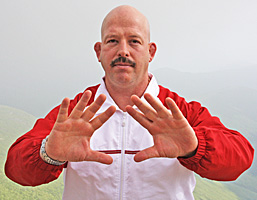Now, I did NOT use the label “bad” when referring to your list of habits – although some of them probably are.
Even so, classifying habits as good or bad does you very little good when all you really need to know is how to break them – or how to keep them.
Reminds me of the Zen story where a young man was caught stealing. He felt badly about being a thief – but simultaneously didn’t feel that he could break his habit.
The Zen Master who was counseling him said nothing about his “bad” habit. In fact, he didn’t even tell him to stop stealing. Instead, he told him that from this point onward, he was only allowed to steal with awareness. He had to be fully conscious, observing his breath and his actions in minute detail.
The thief listened intently and obeyed. And he stopped stealing.
The great Aikido master, Koichi Tohei, wrote about counseling the father whom he saw beating his child.
The sensei told the father that he was only allowed to hit his child when he felt love in his heart for him. He was no longer allowed to strike his child when he felt angry.
The father’s habit of beating his child was broken, afterall, how can you hit a child with love in your heart?
So labeling a habit as “bad” is unnecessary. If it makes you feel good to label it “bad” – then please do so, but it’s not mandatory.
Why? Because some habits we call bad aren’t bad at all. They might just be “over-extended.”
For example, watching tee-vee for 21 or more hours per week, as the average person in the U.S. does, could be classified as “bad.” After all, think of all the things you could create with an “extra” 21 hours per week.
But what if you could cut it down to an hour a day? Or 30 minutes?
Is it still bad?
Personally, about the only thing I watch on tee-vee is sports. Is that bad?
Well, if I never get anything done, it might be – but if I’m still getting things done, maybe it’s a good thing.
Now, if you have a habit that is a flat-out addiction, and this habit is keeping you from enjoying the type of life you know you can have – then completely ridding yourself of it is a good idea. You don’t need to make it “bad” to get rid of it, though. You just need to replace it with something else.
And so, for some people, zero tee-vee is a good idea. Or zero alcohol. Or zero salt, sugar, candy and so on.
The key to ridding yourself of a habit you no longer want, though, is changing the way you SEE YOURSELF; it’s changing how you feel inside.
Change your anger to love – and your habits change.
Change your lack of consciousness to awareness – and your habits change.
Change how you see yourself in your mind’s eye – change what you see yourself doing in your mind’s eye – and anything and everything in your habit-filled life can be changed.
You can change alcoholism and drug addiction into a writing career. I know a number of authors who can make that claim.
You can change excessive eating into a fitness career. I know a number of those people too.
You can change habits that make you unemployable into being an entrepreneur that others consider a “genius.” True.
More on this tomorrow – including what to do with that list I told you to make. For now, just make the list and take a good gander at it. Nothing more.
After doing so, make sure you grab your copy of Maxwell Maltz’ Theatre of the Mind, created by “yours truly” when he wasn’t watching tee-vee.
Best,
Matt Furey
P.S. Want some guidance in ridding yourself of bad habits – then check out my Neg Busters Coaching program.

